TWENTY QUESTIONS WITH NHRA FOUNDER WALLY PARKS
 If we assume that at least a million words have been written about NHRA
founder Wally Parks – not about NHRA per se, but about its leader –
probably 850,000 of them have been positive. Editorial writers –
including this one, I’m sorry to say – have often attacked the sport’s
“father” for his perceived mistakes in first organizing and later
running the largest sanctioning body (in terms of members) in all of
North American motorsports.
If we assume that at least a million words have been written about NHRA
founder Wally Parks – not about NHRA per se, but about its leader –
probably 850,000 of them have been positive. Editorial writers –
including this one, I’m sorry to say – have often attacked the sport’s
“father” for his perceived mistakes in first organizing and later
running the largest sanctioning body (in terms of members) in all of
North American motorsports.In a scenario that’s eerily reminiscent of the 13-year-old who thinks his father is completely out of touch with the modern world and knows nothing and then, when he’s about 18, suddenly wonders how the Old Man learned so much in just five years, so too have many people’s attitudes towards Mr. Parks changed in recent years. This is not to suggest that he’s now above reproach, but it’s more an admission, shall we say, that in retrospect some of those decisions which were dissected and questioned for their relevance now appear to have been the right ones all along.
The Venerable “Father of Drag Racing” Is Still The Conscience Of The Sport
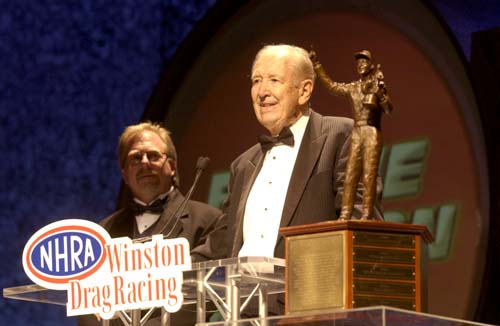
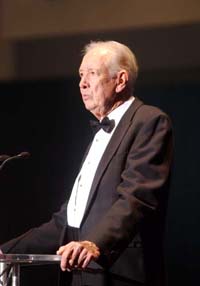 If we assume that at least a million words have been written about NHRA founder Wally Parks – not about NHRA per se, but about its leader – probably 850,000 of them have been positive. Editorial writers – including this one, I’m sorry to say – have often attacked the sport’s “father” for his perceived mistakes in first organizing and later running the largest sanctioning body (in terms of members) in all of North American motorsports.
If we assume that at least a million words have been written about NHRA founder Wally Parks – not about NHRA per se, but about its leader – probably 850,000 of them have been positive. Editorial writers – including this one, I’m sorry to say – have often attacked the sport’s “father” for his perceived mistakes in first organizing and later running the largest sanctioning body (in terms of members) in all of North American motorsports.
In a scenario that’s eerily reminiscent of the 13-year-old who thinks his father is completely out of touch with the modern world and knows nothing and then, when he’s about 18, suddenly wonders how the Old Man learned so much in just five years, so too have many people’s attitudes towards Mr. Parks changed in recent years. This is not to suggest that he’s now above reproach, but it’s more an admission, shall we say, that in retrospect some of those decisions which were dissected and questioned for their relevance now appear to have been the right ones all along.
Now in his 90s, Wally Parks retains the razor sharp mind of an executive a third his age, and while he might not be as visible at the POWERade Series races as he once was, he’s nevertheless very “connected” to the sport. The passing of his wife, Barbara, at the beginning of 2006 was hard on Parks, but as he has throughout his life, he dealt with the loss privately and emerged from his mourning seemingly emotionally stronger than ever. The main problems bothering Parks these days are physical, and one can only imagine his frustration at mentally knowing what he’d like to do, and then having his body refuse to obey those commands. In recent conversations with Parks it’s evident that not being able to attend as many races as he once did is extremely bothersome, because underneath it all, the man remains the ultimate fan.
a d v e r t i s e m e n t
Click to visit our sponsor's website
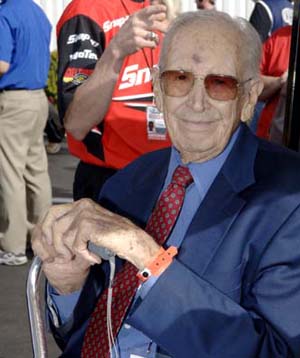 Politicians are known for their ability to remember names and faces, and we don’t know anyone in drag racing who can match Parks for this skill. It’s nothing short of mind-boggling to observe him from a distance at one of those rare events that he does attend. An almost endless string of friends, acquaintances and people he may have met once, 25 years earlier, will stop to say hello, and Parks will remember each and every one of them. It’s actually a scary thing to watch when you know that you can’t remember the name of the guy who drove you to the track!
Politicians are known for their ability to remember names and faces, and we don’t know anyone in drag racing who can match Parks for this skill. It’s nothing short of mind-boggling to observe him from a distance at one of those rare events that he does attend. An almost endless string of friends, acquaintances and people he may have met once, 25 years earlier, will stop to say hello, and Parks will remember each and every one of them. It’s actually a scary thing to watch when you know that you can’t remember the name of the guy who drove you to the track!
While some have assumed that Parks’ absence from the track means he’s also been absent from the decision-making processes of the NHRA, nothing could be further from the truth. It’s enlightening to reference Mr. Parks to other members of the Board of the Directors, for their responses to his involvement are universally positive. Obviously the Board is going to have differing opinions on any number of subjects, but there’s an obvious affection and respect for Parks that permeates their public pronouncements. A few years ago, for example, during a lengthy interview with NHRA president Tom Compton the subject of possibly moving the corporate headquarters to Indianapolis came up. In his answer Compton said a key factor in staying in California was “because Wally’s here.” That simple statement spoke volumes about how respected the organization’s founder is.
While many might not recall it now, Parks has a strong background in journalism (hence his constant interest in and scrutiny of every drag racing publication, including National Dragster). While we remain opposed to submitting interview questions in advance on general principles, a recent conversation with Mr. Parks revealed his willingness to participate in a written interview, and we were happy to oblige.
a d v e r t i s e m e n t
Click to visit our sponsor's website
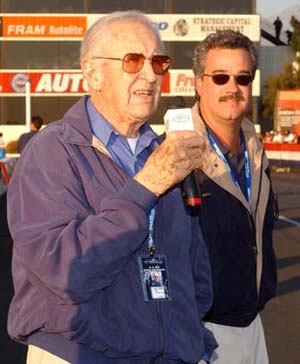 COMPPLUS: When the NHRA was first started, did you have any long range vision that included the sport becoming as big as it is today?
COMPPLUS: When the NHRA was first started, did you have any long range vision that included the sport becoming as big as it is today?PARKS: When NHRA was founded in 1951, a prime objective was to encourage our Hot Rod Magazine readers to form or take part in car clubs, as a means for helping to overcome a poor public image of “hot rods” – that stemmed mostly from illegal street racing.
COMPPLUS: At what point did your vision of the future change to encompass what we have now?
PARKS: We soon realized there were no speed and performance contests included in the safety-oriented activities we were providing for NHRA charter clubs – like the dry lake time trials in California’s deserts – so we adopted plans to cultivate short-distance drag races, on available runways or closed roads, as a recommended civic-service alternative.
COMPPLUS: What do you see ahead for NHRA drag racing?
PARKS: Drag racing’s future, I believe, is unlimited in the number of events and participants that it can accommodate. As the most exciting form of motor racing action, its spectator appeal is outstanding, and the volume of contestants at its major and local events is limitless. The combination of NHRA’s major events and the rising number of participating sponsors ensures long term popularity, just as continuing upgrades in venues have established drag racing as a major player in sports entertainment.
COMPPLUS: Taking the long view, is NHRA more or less likely to expand its ownership of racing facilities in the future?
PARKS: NHRA’s acquisition of drag strips in Indianapolis, IN, Gainesville, FL, Columbus, OH and Atlanta, GA were all rescue missions, of facilities in nationwide strategic locations. And its long term major investment in the Pomona, California Fairplex facilities was to ensure drag racing’s first-class Western prominence on a major scale, for years to come. There are no plans to expand NHRA’s track ownerships, but rather to ensure the success of privately-owned facilities such as Bristol, TN, Infineon Raceway in California and The Strip at Las Vegas, NV, the recently affiliated track at Norwalk, OH, and others of the approximately 140 NHRA affiliate tracks.
COMPPLUS: At some point you must have personally felt that there were performance records that would never be broken. For example, Roger Huntington once wrote in Hot Rod Magazine that performances would never exceed eight seconds flat and 200 MPH. What were your personal “ceilings?”
PARKS: Drag racing is basically an experimentor’s sport, where performance marks often are as challenging as winning races. In its beginning years, 100 MPH was a common target. The speculation by Roger Huntington in Hot Rod Magazine was based on a tire width restriction of 9 inches and his speculation was that we could make more horsepower, but we had to put it to the ground -- a limitation that disappeared with wider and wider tires, softer rubber compounds and vast improvements in traction. My personal speed “ceiling” was an elusive 300 mph – until Kenny Bernstein blew that number into the weeds.
a d v e r t i s e m e n t
Click to visit our sponsor's website
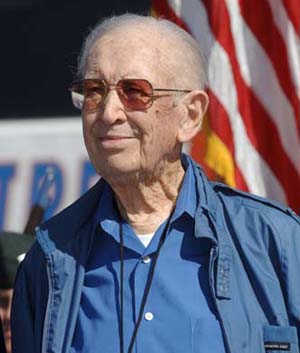 COMPPLUS: With those performance ceilings in mind, what’s your reaction to the mid-four second elapsed times and 330 MPH speeds of today?
COMPPLUS: With those performance ceilings in mind, what’s your reaction to the mid-four second elapsed times and 330 MPH speeds of today?PARKS: Speculation of maximum speeds and minimum elapsed times is futile, as car owners and crews constantly search for improvements. Much of the progress is dependent on both the performance and safety of vehicle components, as well as the expertise of drivers.
COMPPLUS: Even taking into consideration the restrictions of the rules, do you think a three second elapsed time is possible? If so, what’s the limit?
PARKS: As of today, I am doubtful that a 3-seconds elapsed time may soon be recorded, but we have often made predictions before, so who knows?
COMPPLUS: Does the fact that NHRA includes four professional categories hinder the sport’s ability to produce a single million dollar winner annually?
PARKS: Not only is it the four professional classes that collect prize monies, but there are more than 200 individual classes in competition at NHRA events, each of which also shares a portion of the posted prize money. Fields of 800 entries at some events compared to 20-40 in most other motor racing sports, can stretch drag racing’s biggest purses pretty thin.
COMPPLUS: Considering that virtually every major, and some not-so-major, forms of racing in North America pays at least $1M to its champion, how significant is it that drag racing doesn’t have that million dollar man or woman?
PARKS: Drag racing, not unlike any major sport, might like to have a million dollar winner. But since the sport’s inception it was designed to provide a “place to race” for the maximum number of its members. It was until the 1960s that cash prizes were included in its agenda. Excessive purses are incentives for bigger spending by contestants, which today are of concern as already overboard. But there are not enforceable limits on spending.
COMPPLUS: Would the media’s “attitude” towards NHRA drag racing be “improved” by the addition of a million dollar winner?
PARKS: Drag racing is a complex and often difficult activity for the media to cover. Some might find the exploitation of a million dollar winner much simpler and easier than crediting the individual classes of competition, and might perhaps increase exposure.
a d v e r t i s e m e n t
Click to visit our sponsor's website
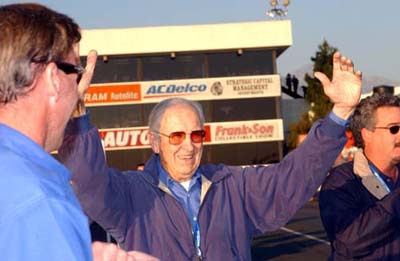 COMPPLUS: Years ago you told me that one of your biggest mistakes as the president of the NHRA was refusing to assist the management at the old Dallas International Motor Speedway when they got into financial trouble after building an expensive road course to go with the drag strip. I remember our conversation well, and in your words, you told manager Ben Parks, “We’re not in business to be in competition with our track operators.” Shortly thereafter, and following a fatal jet car accident during an IHRA race at the track, the property was sold to Xerox Corporation, and the land is now a business park. Also around the same time, NHRA did get into the real estate business by buying up tracks like the ones in Louisiana, Atlanta, Gainesville and Indy.
COMPPLUS: Years ago you told me that one of your biggest mistakes as the president of the NHRA was refusing to assist the management at the old Dallas International Motor Speedway when they got into financial trouble after building an expensive road course to go with the drag strip. I remember our conversation well, and in your words, you told manager Ben Parks, “We’re not in business to be in competition with our track operators.” Shortly thereafter, and following a fatal jet car accident during an IHRA race at the track, the property was sold to Xerox Corporation, and the land is now a business park. Also around the same time, NHRA did get into the real estate business by buying up tracks like the ones in Louisiana, Atlanta, Gainesville and Indy.Were there other major mistakes like that one that you’d be willing to share with our readers?
PARKS: As I indicated a bit earlier, most of the tracks that NHRA has purchased are ones that were in need of repairs, big improvements and/or management. Dallas International Motor Speedway was one we simply had no means of purchasing – regrettable then and now. Our number of successes over the years far exceed losses – we don’t dwell on mistakes.
COMPPLUS: During the sport’s early years you often expressed the opinion that the cars were the stars, and the drivers were only of secondary importance. I believe that viewpoint changed during John Raffa’s tenure as an adviser to the staff of National Dragster. Do you believe that your insistence on the hardware over the personalities ultimately had a negative impact on the sport’s ability to grow in popularity and acceptance with both its potential fan base and the media?
PARKS: Cars vs. stars still is a debated subject today – some folks still preferring to tour the pits then watch the wild variety of cars and bikes as they race side-by-side down the track. As in other forms of racing, some like to follow the progress of individual racers and/or crew members – creating their own heroes in all classes of competition. In my opinion, one is no good without the other in the combination of drag racing’s stars. National Dragster’s melding of both was generated by its own staff, in the balance of its outstanding coverage today. My focusing on the cars may have been prompted by experience in building Hot Rod Magazine and by the realization that cars and components were the attraction for readers and members. Our ‘inability to grow” isn’t reflected in the fact that NHRA today is the world’s largest motorsports sanction body – with more vehicles in competition than all majors combined.
COMPPLUS: Do you think NHRA drag racing would have achieved the kind of national prominence it has without the involvement of Winston?
PARKS: There is no questioning the fact that Winston’s years of sponsorship, before the ban on such involvement applied, was one of the most beneficial eras of advancement our sport has known. Much of their involvement was in track improvements, while bigger incentives for winning were a stimulant for racer participation and set new patterns for sponsorship.
COMPPLUS: How instrumental was Winston in the growth of the sport? In other words, was Winston’s direct involvement with NHRA’s decision-making a key factor, or did NHRA go it alone in terms of making long term plans during the years that Winston was involved?
PARKS: One of Winston’s first declarations was in advising us that they “didn’t want to be involved with our politics, rules making or event planning” – a creed that was never in doubt.
COMPPLUS: In your view, is POWERade a “better” sponsor for NHRA drag racing because it lacks the negativity of tobacco use that Winston advocated?
PARKS: Winston in its time, and POWERade today are totally different worlds, offering many uplifting changes in the sport over the last few years. In their respective time frames, each qualifies as a contributing sponsor without peer in the forward progress of drag racing.
a d v e r t i s e m e n t
Click to visit our sponsor's website
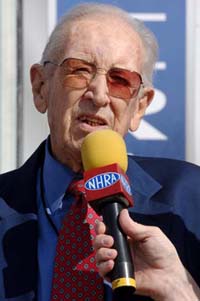 COMPPLUS: In your view, is POWERade’s involvement with the sport likely to expand in the next few years, or will it stay about the same as it is now?
COMPPLUS: In your view, is POWERade’s involvement with the sport likely to expand in the next few years, or will it stay about the same as it is now?PARKS: POWERade’s sponsorship is a long term one, bent on improving the sport and extending its product prominence in the marketplace. Each year brings new benefits.
COMPPLUS: Winston, through its Sports Marketing Enterprises operation, ended up painting the buildings at a number of NHRA tracks, in some instances turning their appearances around almost 100%. POWERade has yet to adopt that kind of program. Do you think that kind of effort on their part is in the cards for the future?
PARKS: POWERade’s benefits to drag racing, as a division of Coca-Cola, and its endeavor to extend added benefits of importance to NHRA, the tracks, the racers and event attendees is a part of long term future planning. Many new features are to be expected.
COMPPLUS: One of the “complaints” we hear aimed at NHRA is that, with a single exception, none of the managers have any background in the sport and therefore (in the eyes of some) don’t fully understand or appreciate what it takes to be a competitive racer. Does this viewpoint have validity?
PARKS: Complaints are nothing new to either drag racing or NHRA – some of the weirdest coming from the media. Racers have always questioned the wisdom of track management in establishing guidelines or other aspects of conducting events. It’s a two-way street.
COMPPLUS: With your background in publishing you’ve always taken considerable interest in the kind of print exposure NHRA drag racing receives. The coming of televised drag races and the increasing importance of the Internet as a news source has changed how the magazines view the sport. What must be done to increase drag racing’s print exposure, because “tear sheets” can go a long way towards convincing potential sponsors of the value of the sport as a marketing tool.
PARKS: Both television and Internet coverage have posed competition for monthly magazines, due in part to long lead-times. Some of the oldest and once-most-involved magazine have chosen to bypass drag racing coverage, despite the extent of readership event audiences represent and the vast amount of potential advertising. It’s purely a matter of coverage choice.
COMPPLUS: Since the announcement about the new points system last September there have been hundreds of thousands of words written about it, the vast majority of them negative, many taking the tack that Why fix what isn’t broken? Considering that in both 2005 and 2006 the Finals included nail-biting points race finales, the Why-fix-what-isn’t-broken argument would appear to have some merit, just as does the oft-voiced “complaint” that the new system is yet another example of NHRA “following” NASCAR. What’s your take on these issues?
PARKS: Any new concept in racing is targeted by doubters – usually ones with their own personal interests at stake and others who simply resist change without full knowledge. NHRA’s refinement of its points system for professional classes is aimed at ensuring that the most eligible finalists at the season ending events are the best of the lot. That it is a takeoff from NASCAR’s system is ridiculous. In fact, the takeoff is in the other direction, with NASCAR seeking women drivers, encouraging ethnic contenders and this season, opening its infields to pre-race spectators – all of which have been NHRA practice for decades.
| {loadposition feedback} |







